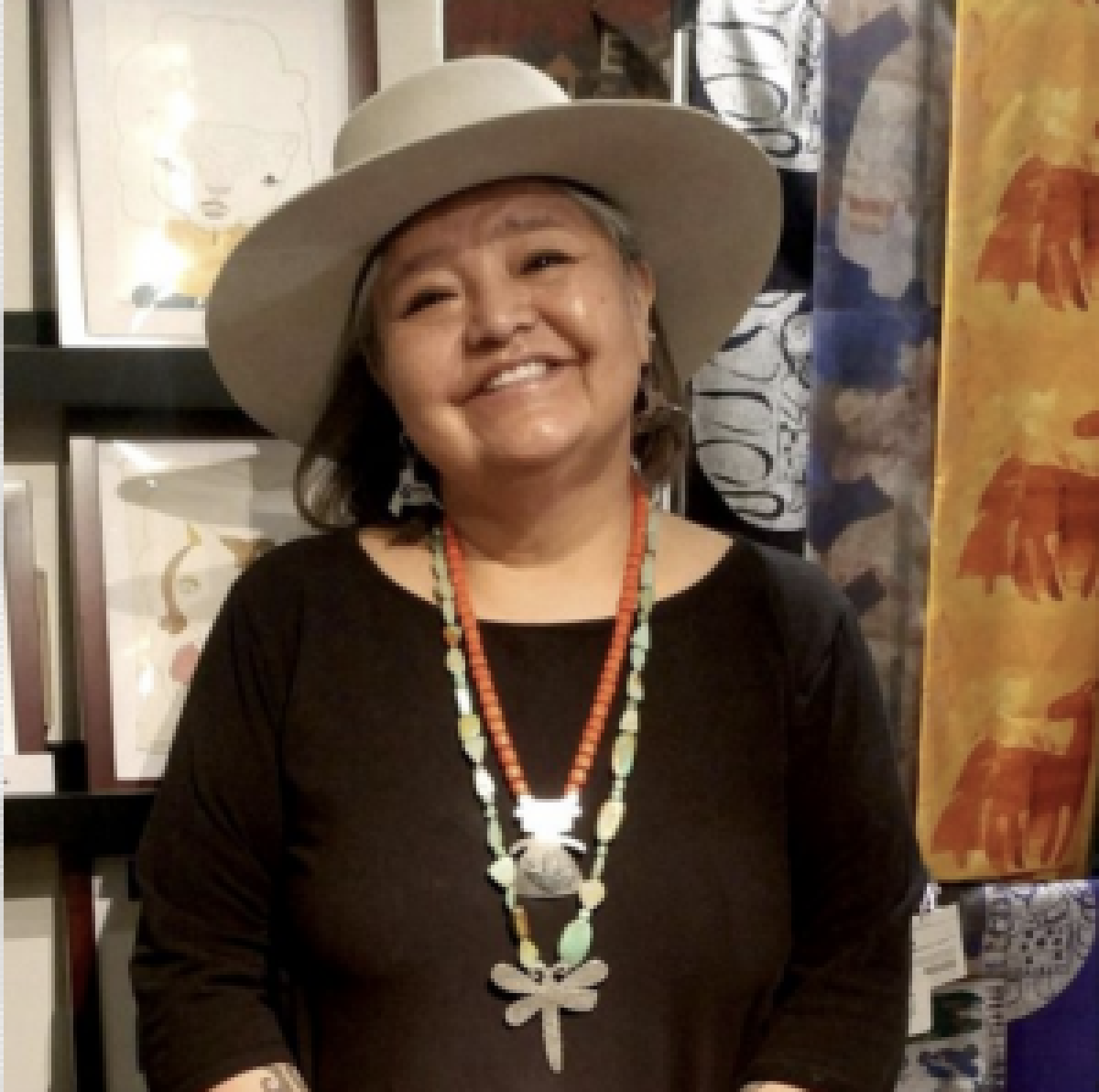Melanie Yazzie
- Professor
- Area Coordinator Printmaking
- ART AND ART HISTORY
As a printmaker, painter, and sculptor, Melanie Yazzie’s work draws upon her rich Diné (Navajo) cultural heritage. Her work follows the Diné dictum “walk in beauty” literally, creating beauty and harmony. As an artist, she works to serve as an agent of change by encouraging others to learn about social, cultural, and political phenomena shaping the contemporary lives of Native peoples in the United States and beyond. Her work incorporates both personal experiences as well as the events and symbols from Dine culture. Her early work focused on depictions of the harsh realities of Native peoples (i.e., racism, identity conflict, poverty, abuse, etc.) to bring to Native issues to the forefront, but more recently she is making work with a positive twist. Due to personal health issues and trying to live a calmer life style, she is focusing on quiet and balance, her work is reflecting this shift. Her work is informed and shaped by personal experiences and tries to tell many stories about things both real and imagined. The history of Native America and Native peoples includes forced assimilation and cultural genocide that has occurred due in great part to government boarding schools. Native youth and communities today are burdened with the consequences of this history and by an educational system that prioritizes knowledge foreign to Native community’s indigenous knowledge.
Ms. Yazzie uses her travels around the world to connect with other indigenous peoples. Her visits to New Zealand, the Arctic, the Pueblos in the Southwest, and to indigenous peoples of Russia, these travels have been the impetus for continued dialogue about Indigenous cultural practices, language, song, story-telling, and survival.
Ms. Yazzie has exhibited widely, both in the United States and abroad. One of the most recent exhibitions titled, Mappings: Selected Recent Works of Melanie Yazzie, in 2012 featured twenty-four new paintings at the O’Sullivan Art Gallery at Regis University in Denver, Colorado. The paintings depict prayer, ceremony, and ritual, including images of ceremonial foods. For the Diné people, these paintings represent a stronger, more direct connection to the intimate aspects of ceremonial life and life routines. In the current time she has just returned from having a solo exhibition in Hastings, New Zealand and this fall 2012 she has 5 solo exhibitions planned for: Westtown, PA, Davis, CA,Reno, NV, Helskini, Finland and Tenerife, Canary Islands. Along with being artist in residence in October at Crow Shadow Institute of the Arts in Penddleton, OR. In 2011, she had a solo exhibition of paintings inspired by the Denver Botanic Gardens called Storykeeper: Works By Melanie Yazzie. Ms. Yazzie often collaborates on her work to demonstrate how people from different cultures and places can use the art process to create pieces with a shared meaning. For the 2010 exhibition The Rain Has Come: Melanie Yazzie & Sue Pearson at Tawera Studio Gallery in Gisborne, New Zealand, the two artists painted on linen then layered their works so Yazzie’s Dine inspired motifs combined with Pearson’s images from her Norfolk ancestry. These pieces created a strong visual and tangible method from which to share our story with others.
Her work is in the Phippen Art Museum, The Australian National Gallery and the Museum of Art, Rhode Island School of Design, Print Collection, Providence. She has been reviewed in Focus Magazine, Santa Fe, the Los Angeles Times, New Zealand Herald, and she is mentioned in Printmaking in the Sun by Dan Welden and Pauline Muir, Native American Art in the Twentieth Century by W. Jackson Rushing III, and The Lure of the Local: Sense of Place in a Multi Centered Society by Lucy Lippard. She has had over 100 group and solo exhibitions combined. Yazzie makes prints, sculptures, paintings, and mixed media works. Her work can always be found at the Glenn Green Gallery in Santa Fe, New Mexico.
Ms. Yazzie is a professor of printmaking in the Department of Art and Art History at University of Colorado, Boulder, Colorado, USA. She considers the global impact in her work, striving to create safe, non-toxic methods of printmaking where toxic chemicals are commonly used.


